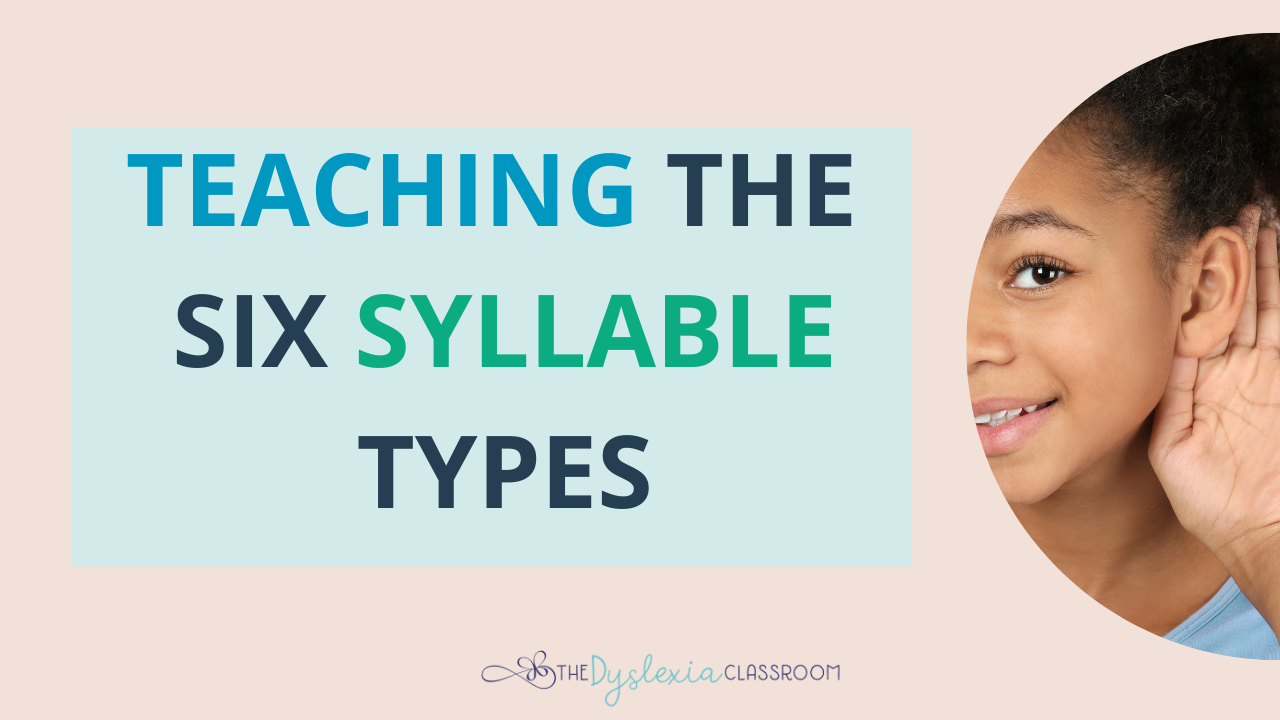The Role of Morphology in Syllable Division and Multisyllabic Word Reading

This is part 4 of the syllable types blog series. Read part 1 , part 2 , and part 3 and 3* bonus.
Morphology is a crucial part of structured literacy lessons that teachers should introduce early within reading instruction. In fact, I teach morphemes to my kindergarten students. Why? From the beginning, we want students to understand that words carry meaning, and morphology is a great way to help students deepen their understanding of language. We don't have to wait for this instruction to take place. Instead, we can embed morphology instruction into our lessons and help students with this right from the start.
Morphology instruction, the study of words and how they are formed and used, is one of the elements of structured literacy. When we look at language through the lens of units of meaning within words, that is part of morphology. Dr. Louisa Moats notes, "Knowing morphemes enhances reading, vocabulary, and spelling." (Moats, 2000). As students increase their understanding and use...
Helping Older Students With Decoding and Syllable Types

This is a quick addition to part 3 of the syllable types blog series. Read part 1 and part 2.
I recently saw a question posed about how to help a middle school student who continually made errors in vowel sound production when reading, even after interventions, and while I responded on the social media page, I also thought of this quick strategy that I have used for years with my older students and that it was was worth sharing.
So, in addition to solidifying sound-symbol correspondence knowledge with the student and applying this to their decoding strategies, how can we help our older students make the quickest gains in the area of accurate decoding, honor their age, and, most importantly, help them understand how to use strategies in real life (their classrooms!)?
When older students come to work with me, they often have multiple areas where they rely on compensation skills. One of these is looking at a word’s first letter or part and then guessing or saying a word that may sound ...
Syllable Division
This is part 3 of the syllable types blog series. Read part 1 and part 2.
Our students encounter multisyllabic words daily in the spoken and written word. One of the hallmarks of dyslexia is "...difficulty with accurate and/or fluent word recognition and by poor spelling and decoding abilities..." (International Dyslexia Association, Dyslexia Definition). Just as students need explicit instruction in early decoding skills, they need reliable decoding strategies as they move into reading multisyllabic words. These word-attack strategies are necessary for students, especially those struggling with reading, so they can avoid falling into the bad habit of guessing. Strong readers subconsciously break words into syllables and meaningful parts (think affixes and roots) when reading new unknown words. Explicitly teaching students HOW to approach a larger multisyllabic word sets them up for success and is especially important for our dyslexic and struggling readers.
What is Syllable Divisio...
Teaching the Six Syllable Types

*This is part 2 of the series about syllables and syllable types in reading instruction. Read part 1 here.
In part 1 of the What are syllable types and why do they matter? blog series, I shared some information on why we should teach syllables, plus some tips for teaching students, and provided some scaffolds. This part of the series continues with syllable knowledge and connects to syllable types.
Why Teach the Six Syllables?
As teachers, we cannot assume that children automatically know the sounds linked to letters. Therefore, we must explicitly teach sound-symbol correspondences, which provide a foundation for students to read one-syllable words successfully. But what must we teach to allow students to move beyond this? Teaching the Six Syllable Types provides a robust foundation for students and provides students with word attack strategies and tools to approach unknown words.
In addition to sound-symbol relationships, explicitly teaching syllable types, syllable division (thin...
What are syllable types and why do they matter - Part 1
*This is part 1 of the series about syllables and syllable types in reading instruction.
The ultimate goal of reading is for our children to achieve high levels of comprehension. We want this for ALL children. Reading comprehension is a product of printed word recognition and language comprehension (Gough & Tunmer, 1986). This means that weakness in either (or both) domains leads to weak reading comprehension.

The Simple View of Reading
The Simple View of Reading, by Gough & Tunmer, breaks apart the very complex elements needed for reading into two broad categories: word recognition and language comprehension. Reading comprehension is a product of these two categories.
Word recognition, or the accurate and fast retrieval of decoded word forms, is essential for developing reading comprehension. Students who can not accurately read the words on the page will not fully comprehend what is being read. This automated word reading frees up mental resources and allows for close atten...



